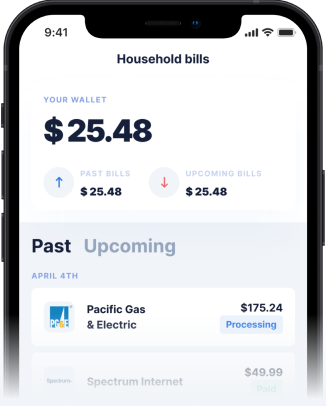Tips to Decrease Costs and How Much You Spend Each Month
Living paycheck to paycheck is exhausting, especially when you’re trying to see where you can save money. It can seem overwhelming to think about where to cut costs, but even the smallest changes add up and make a difference. We’ve put together 17 ways to help you cut costs so you can rest easier.
How to Spend Less Money
It’s often easier to cut costs once you have ideas of where to look. Even if it takes a little more effort initially to restructure an area of your life, the financial payoff is worth it. Here are 17 ways you can save money each month.
1. Analyze Where Your Money Is Going
The first step to cutting costs is seeing where your money’s going. If you don’t have a budget, now is a great time to put one together. Spend a little time tracking your monthly expenses and spending. You can do this online, on your phone, or with pen and paper — whatever’s easiest for you.
If creating a detailed budget is too overwhelming right now, write or type a general idea of your costs from the last couple of months based on your bank account history. Then divide things into categories like “needs,” “wants,” and “goals” to see where your money’s going.
2. Switch Cell Phone Plans
Most of us sign up with a cell phone provider and then don’t think about downsizing or changing when we need to cut costs. But there are usually cheaper options out there. Consider switching to a different plan or switching cell phone providers altogether. If you’re using one of the big companies like Verizon, T-Mobile, or AT&T, it might be worth looking at some alternative providers.
3. Cook Meals at Home
Even though it’s convenient, the cost of eating out can add up more than we realize. By meal planning and/or cooking at home, you’ll save money.
You can make a list of items at the beginning of each week so you know exactly what you need. When it comes to cooking, you’ll likely have leftovers that you can use for lunch the next day or freeze for easy meals in the future. Cooking large batches is also helpful if you’re low on time. That way, you have multiple meals on hand that you won’t have to pay for when you’re in a rush.
4. Cancel Unused Subscriptions
A lot of us have unused subscriptions that we don’t need anymore. It could be a subscription to cable, a fitness publication, streaming services — the list goes on.
Go through unused subscriptions and cancel them. You’ll probably find a few you weren’t aware you were still getting charged for. Small costs like these might not seem like they add up, but Maureen Milliken at Debt.org has a great perspective on this: “Think of cutting expenses as death to debt by a thousand cuts, not one big blow.”
5. Shop Secondhand
Shopping secondhand is a great way to save money and save the environment. By buying clean clothes, dishes, books, and other items secondhand, you’re ensuring these items are used rather than dumped in landfills.
Secondhand items are often as good or better quality than brand-new items, and they’re usually much cheaper too! You can find gently used items that are almost like new for a better price than you’d get at a retail store.
6. Work Out at Home
Feel like your gym bill costs too much right now? There are free workout videos of all kinds online, especially on YouTube. Whether you’re looking for Pilates, strength training, cardio, or dance workouts, you’ll find plenty of options.
Sites like Fitnessblender.com offer hundreds of free workout videos from qualified personal trainers and physical therapists. It’s a resource that’s accessible to any fitness level or interest. By taking a little time to research what’s online, you can save money and still take good care of yourself.
7. Stop Paying for Cable
Cable TV — with the ads and lack of new material — might not be worth it anymore. If you don’t want to miss out on entertainment, try a streaming service instead. Streaming services are cheaper, they often have fewer or no ads, and they typically have more material. And you can watch your favorite shows when it’s convenient for you.
Don’t have money for streaming services right now? Cut cable anyway and get free local channels with a digital antenna. Or use the extra time to develop a low-cost hobby or strengthen relationships with family and friends.
8. Get a Library Card
If you or your family members love reading, a library card is the perfect no-cost way to continue this hobby. Not only do you have access to physical books, but you also have access to audiobooks, e-books, and DVDs, depending on the library.
In addition, if you or your child need a quiet, convenient place to work, the library can help you with this, especially now that more of us are working remotely than ever. If computer costs are an issue for you right now, your library card gives you access to the building’s computers and printers as well.
9. Stick to Your List
Have trouble planning what you or your family need from the store? It helps to make a list before shopping so you know exactly what to buy. That way you know which stores to visit to get the cheapest prices on necessary items like food and toiletries.
Having a list can also save you from making more trips to different stores than you need to throughout the week. You’re also more likely to avoid eating out if you have a list that guides your grocery shopping for the week.
10. Program Your Thermostat
Putting your thermostat on a schedule is an easy way to save money on air conditioning and heating when you’re not home. A smart thermostat allows you to adjust the temperature even when you’re away.
It might not seem like a major way to cut down on expenses, but these unseen costs can add up. During the winter, set your thermostat to warm up about 30 minutes before you get home, so you return home to a comfortable house but don’t waste money heating an empty house all day.
11. Compare Prices to Get Better Deals
There are many online tools to help you find the best price instead of buying something that’s more expensive than necessary. Whether you’re in a store or looking for something online, don’t forget to compare prices. If it’s back-to-school season, you can often get textbooks at a better price online through sites like Chegg or ThriftBooks than at your college textbook store.
12. Try Couponing
Check online or in papers like your local grocery store ads for any current coupons. If you’re in a store and unsure about what coupons are available, ask an employee what’s available for the day.
Also, if you shop at the same stores frequently, you might be eligible for a loyalty program that results in rewards, whether it’s cash back or product discounts. There are plenty of apps, like Ibotta, that help you earn cash back for groceries and other items.
13. Insulate and Seal Your Home
It can seem costly to insulate and seal your home, but making the investment is worth it year-round. Leaving your house unprotected can effectively be the same as leaving a window open every day for a whole year.
According to the Environmental Protection Agency, homeowners can save an average of 15% on heating and cooling costs when their home is properly insulated and sealed. Making these changes also helps protect your home from other problems like excessive noise, pests, high humidity, and ice dams in snowy areas.
14. Negotiate the Cost of Your Bills
It’s important to keep a close eye on your bills to save money. If you want to negotiate the cost of something like your cell phone bill, present other companies’ options to your provider and see if they will match the lower rates so you stay on their plan for a lower cost.
To ensure you’re being charged accurately, check your billing statement for errors and contact your provider if you notice something inaccurate.
15. Purchase Energy-Efficient Appliances
Like other home changes, energy-efficient appliances can seem too costly to be beneficial. But the money you spend initially saves you headaches and greater costs on repairs and replacements in the long run.
Start small by doing things like replacing incandescent light bulbs with energy-efficient ones. Buying Energy Star appliances ensures that your washer, dryer, stove, and other appliances are working effectively while using less energy, saving you money.
16. Buy in Bulk
Planning ahead so you can buy pantry staples in bulk cuts down on food costs. It helps you avoid making multiple trips to the store when making one trip and buying more of an item is cheaper.
Buying in bulk usually gets you a better price per unit. Often, an item with a better retail price (the price you actually pay for the item) doesn’t have a cost-effective unit price (the cost of the item per pound, ounce, quart, etc.). Larger amounts often give you more for your money, and buying in bulk helps you plan ahead because you have enough to make leftovers for easy, low-cost meals later in the week.
17. Find Free Activities and Entertainment
As we mentioned earlier, local libraries are great sources of free entertainment, with access to books, DVDs, and music. Local colleges also put on shows or exhibits that are often open to the public.
Try free streaming services like Peacock if you’re looking for online entertainment.
Download Gerald Today
Struggling to keep track of your costs? Gerald offers budgeting so you can easily see where your expenses are adding up and where you could save money. You’ll know exactly how much money you have for the needs and goals in your financial life. We also offer bill tracking that lets you cancel unused subscriptions, set up autopay, switch bill payments to different accounts, and get in control of your bills again. If you’re ready to feel less stressed about making your payments, download Gerald today for peace of mind about your financial future.


